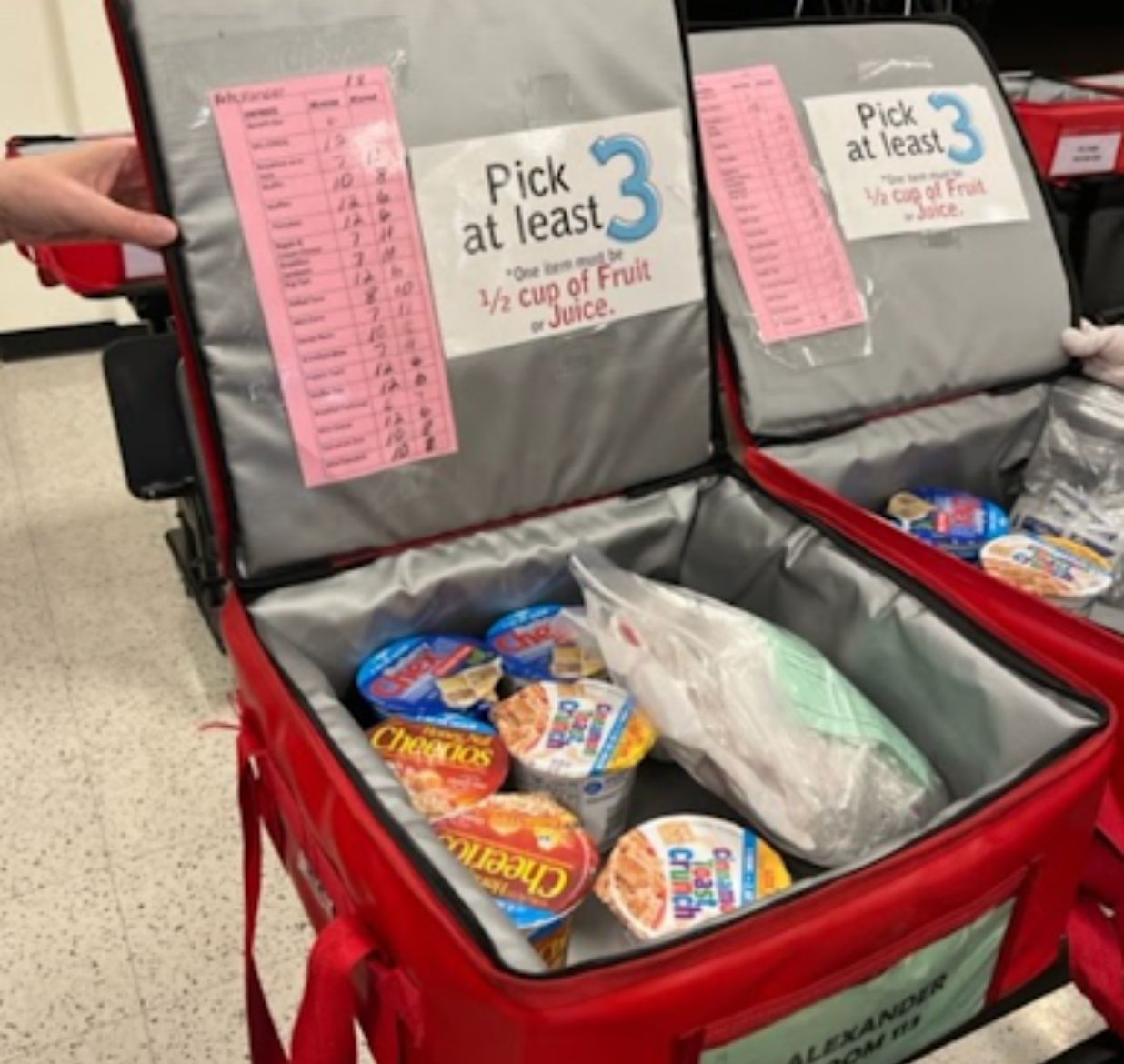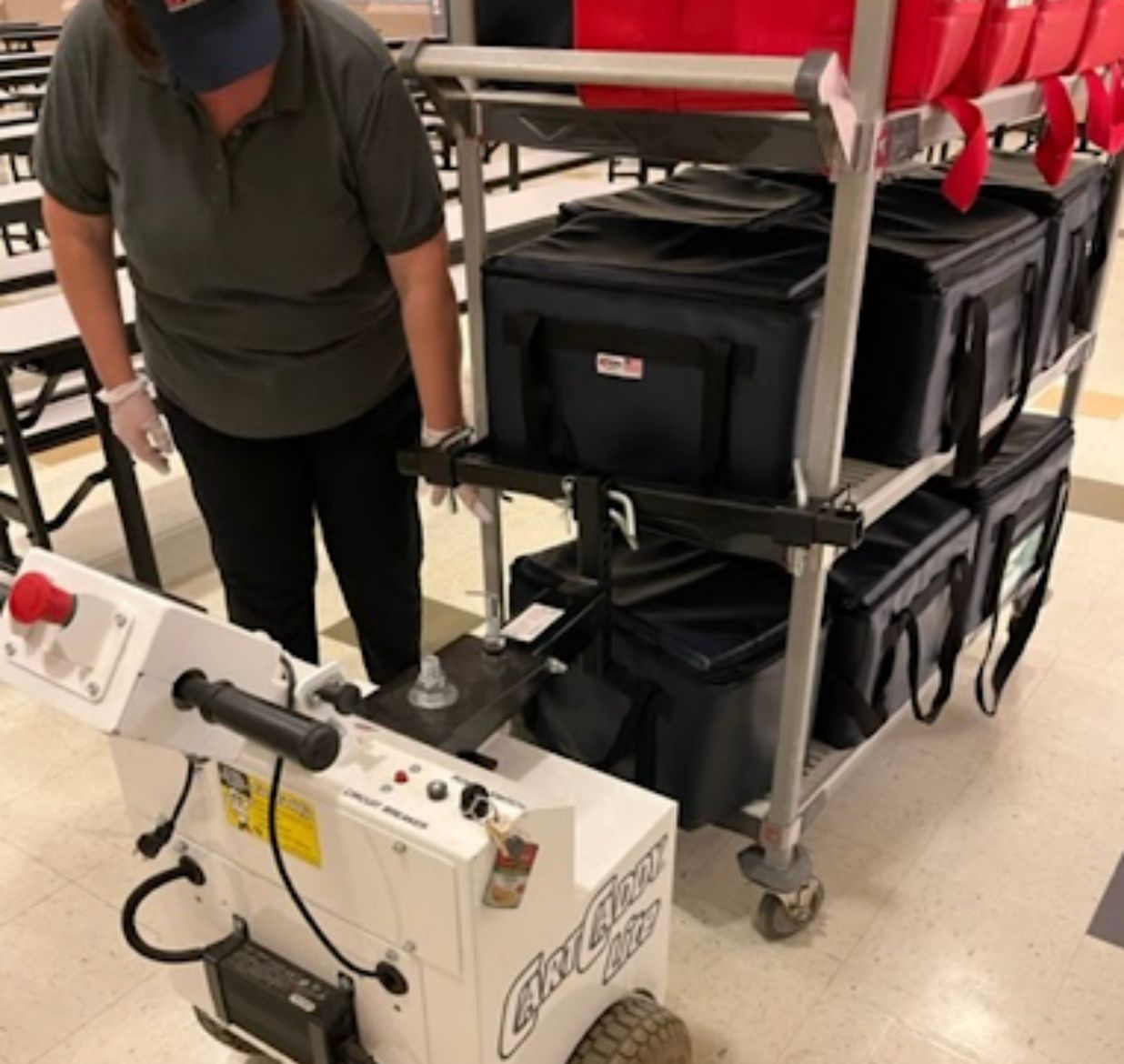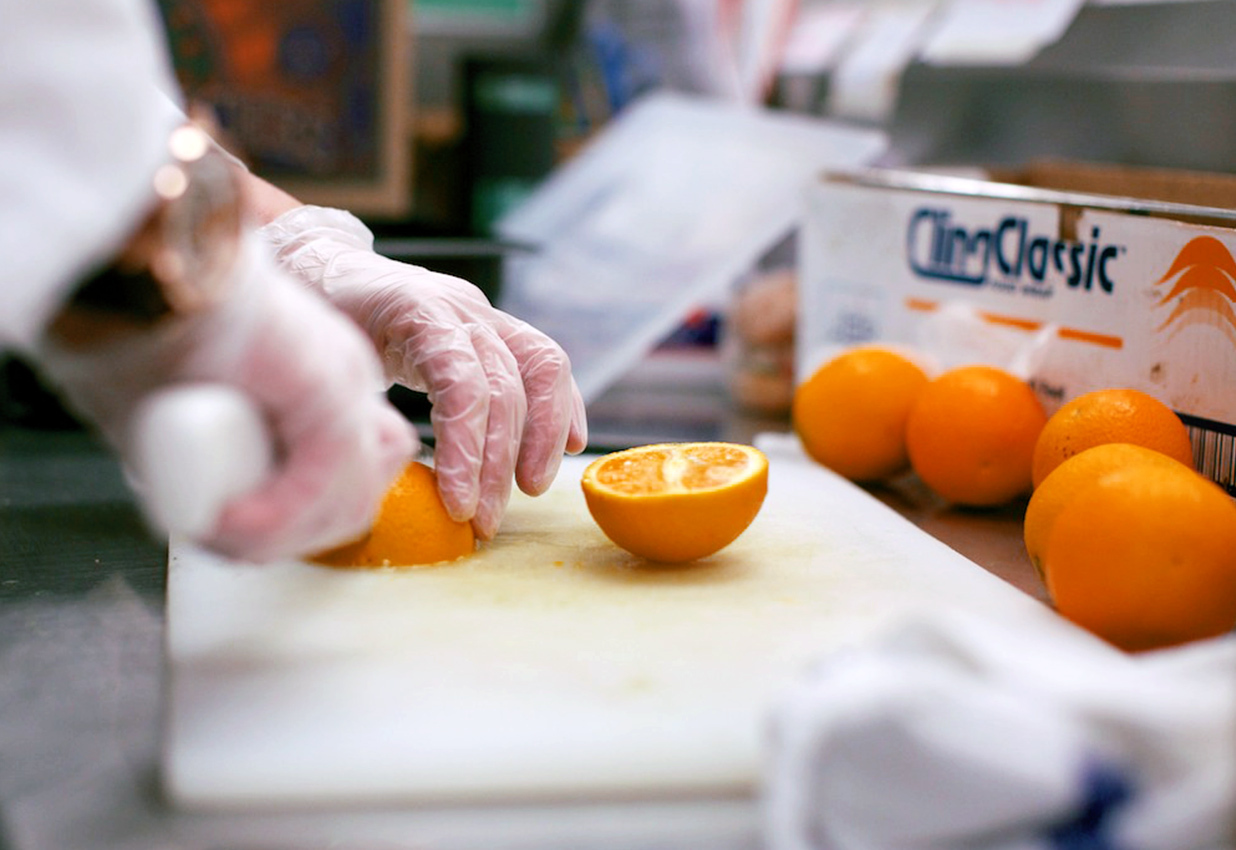
School Breakfast: Operations
In every district, the variety of school building types, age, and access means that there may be as many customizations to breakfast operations as there are schools. The overarching goal is to create efficiency by implementing standard operating procedures and menu cycles, as well as adequate staff training in breakfast procedures and the importance of breakfast. Delivering a cohesive, organized breakfast plan to the district decision makers is imperative to success.

School Breakfast: Operations
In every district, the variety of school building types, age, and access means that there may be as many customizations to breakfast operations as there are schools. The overarching goal is to create efficiency by implementing standard operating procedures and menu cycles, as well as adequate staff training in breakfast procedures and the importance of breakfast. Delivering a cohesive, organized breakfast plan to the district decision makers is imperative to success.
Use our Breakfast Assessment Tool to compile all the key school-building information in one place. This will guide you through the decision-making process. For example, based on the projected participation, which sites will require additional refrigeration? How many classrooms, hallways, and stairways are there?
Assessing each location’s needs allows you to identify building challenges, schedule issues, and needed infrastructure improvements like electricity for refrigeration. You may have sites where traditional breakfast is the only option. In those cases, are there bus drop-off issues? Is the cafeteria space used before school for other programming? How early is your staff currently arriving at the site? All of this information is critical in developing an effective plan and the eventual success of your breakfast program.
Equipment
Equipment and Smallwares
Depending on the breakfast model you will launch, there are many factors to consider. Consider the type of equipment you may need to not only serve the most students but also help your staff be as efficient as possible. Being creative with service for alternative breakfast models will not only help with participation and labor efficiency but can also provide sustainability opportunities. Breakfast in the classroom programs can sometimes limit the menu. Still, with equipment such as hot and cold insulated soft totes, automated cart movers, and foam inserts to totes, many new menu opportunities can be achieved. Implementing merchandising carts that can easily be wheeled throughout the school can make serving grab-and-go breakfast models in a pop-up location easy and more appealing. Second chance breakfast can also thrive with engaging equipment marketing materials such as breakfast cart signs. See the Marketing Page for downloadable marketing materials to support your program.


Equipment
Equipment and Smallwares
Depending on the breakfast model you will launch, there are many factors to consider. Consider the type of equipment you may need to not only serve the most students but also help your staff be as efficient as possible. Being creative with service for alternative breakfast models will not only help with participation and labor efficiency but can also provide sustainability opportunities. Breakfast in the classroom programs can sometimes limit the menu. Still, with equipment such as hot and cold insulated soft totes, automated cart movers, and foam inserts to totes, many new menu opportunities can be achieved. Implementing merchandising carts that can easily be wheeled throughout the school can make serving grab-and-go breakfast models in a pop-up location easy and more appealing. Second chance breakfast can also thrive with engaging equipment marketing materials such as breakfast cart signs. See the Marketing Page for downloadable marketing materials to support your program.

Many organizations offer grants that provide funds or equipment that help support school breakfat program expansion. Common organizations that supply these types of grants include:
State Specific Grants
Frequently check in on these organizations’ websites or subscribe to newsletters to know when equipment grants are open and stay up to date on upcoming opportunities.

Many organizations offer grants that provide funds or equipment that help support school breakfat program expansion. Common organizations that supply these types of grants include:
State Specific Grants
Frequently check in on these organizations’ websites or subscribe to newsletters to know when equipment grants are open and stay up to date on upcoming opportunities.
Breakfast Model Type
Breakfast is often called the “most important meal of the day.” Children need nutritious food in the morning to fuel their bodies, and many studies prove how breakfast affects attention, behavior issues, mental health, and academic performance. Unfortunately, many kids don’t have access to breakfast at home. In addition, one of the most significant challenges for access to breakfast at school is the serving time. Many families can’t get their kids to school early, and kids who ride a bus often don’t have the advantage or option of arriving early. This is why school districts are beginning to implement more creative serving options for their School Breakfast Programs to combat these common challenges and feed more students a healthy meal to start their day. Here are a few ways to serve breakfast in schools:
- Breakfast in the Classroom
- Breakfast After the Bell
- Grab ‘n’ Go - Portable Breakfast Stations
- Traditional Breakfast
The breakfast model that you choose to implement in your schools may depend on things such as:
- State requirements
- District and/or school-specific requirements
- School schedule
- Structure of school
- Staffing and budget
The ultimate goal is to follow all specified requirements and work with district partners to ensure the most appropriate breakfast model is implemented for the district and the students.
Staffing and Labor
The impact of breakfast on your current labor model will vary depending upon your operational model, breakfast model, bell schedules, service hours, and historical labor assignments at the sites. Our Meals Per Labor Hour Worksheet is a useful tool to outline your labor baseline. Any time your program changes, it is important to review the impact as part of the planning process.


Staffing and Labor
The impact of breakfast on your current labor model will vary depending upon your operational model, breakfast model, bell schedules, service hours, and historical labor assignments at the sites. Our Meals Per Labor Hour Worksheet is a useful tool to outline your labor baseline. Any time your program changes, it is important to review the impact as part of the planning process.
Depending on how much labor is attributed to the site before expansion, adding breakfast may or may not require additional labor. Reorganizing start and exit times, adding an hour or two, and occasionally hiring additional personnel are all options but need to be vetted against current labor assignments and expected workload of the expansion.
When calculating a meal equivalent to evaluate Meals Per Labor Hour (MPLH), we typically assign BIC at 2:1, or two breakfasts equal one meal equivalent. This is because it requires more labor if the foodservice staff is solely responsible for pack-out, delivery, pick-up, and data entry. Traditional Breakfast or Grab ‘n’ Go would be factored at 3:1, three breakfasts equal one meal equivalent. When determining labor requirements, MPLH analysis should be considered in the context of other practical considerations of the site, such as facility limitations and bell schedules that create gaps in service.
SOPs
Standard Operating Procedures
Standard Operating Procedures (SOPs) for breakfast service must be articulated for the particular service model and updated as part of the department’s SOPs. For example, handling leftovers in classroom breakfast and the proper set-up of Grab ‘n’ Go should each have a SOP. Here are some SOP’s for the most common breakfast models including traditional breakfast, breakfast in the classroom, and grab ‘n’ go:
Recommended Next Topic: Menu Development
Due to the many challenges that can be faced when implementing a successful breakfast program including labor, budget, nutrition requirements, and waste, packaged convenience foods are often relied on. With the research supporting the benefits of a healthy breakfast on students’ wellbeing, it’s important for schools to provide breakfast meals that are not only attractive and delicious, but also healthy, cost-effective, and meet USDA nutrition guidelines.
Recommended Next Topic: Menu Development
Due to the many challenges that can be faced when implementing a successful breakfast program including labor, budget, nutrition requirements, and waste, packaged convenience foods are often relied on. With the research supporting the benefits of a healthy breakfast on students’ wellbeing, it’s important for schools to provide breakfast meals that are not only attractive and delicious, but also healthy, cost-effective, and meet USDA nutrition guidelines.









